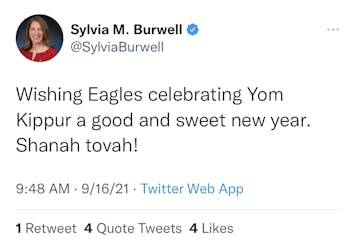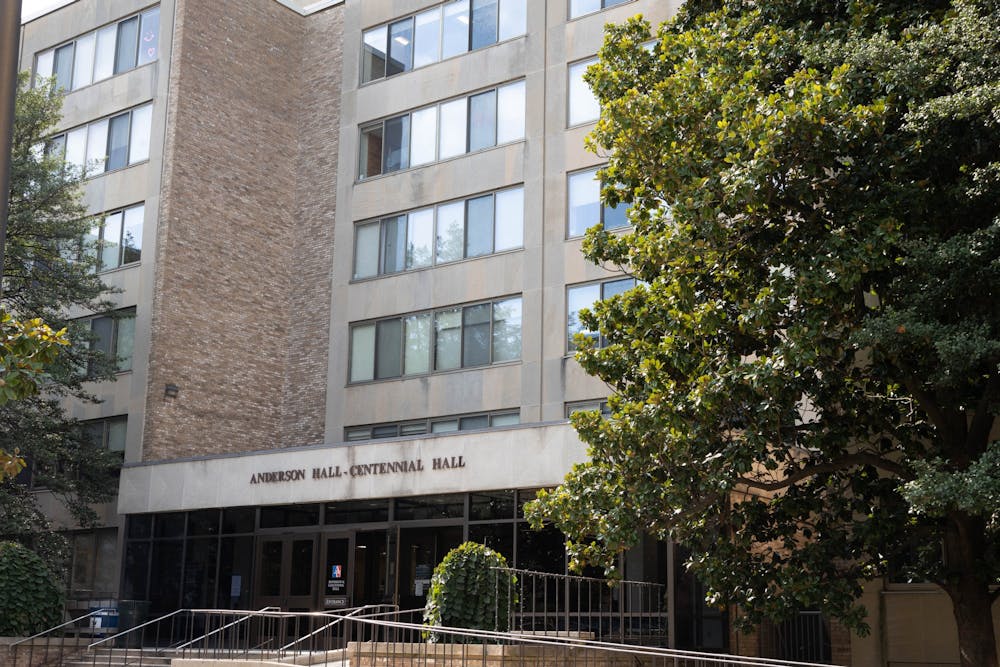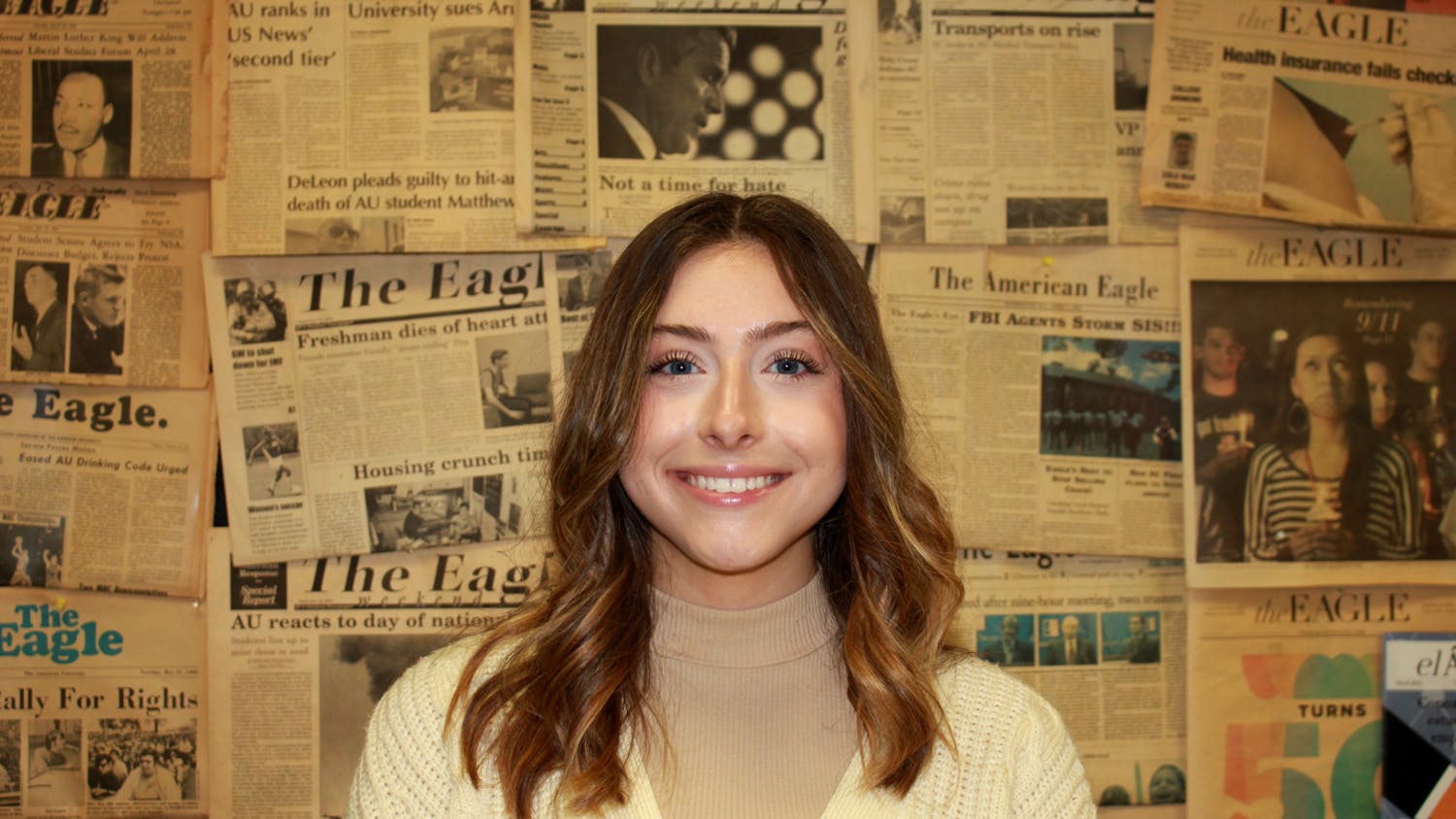Prompted by the antisemitic vandalism found in Anderson Hall’s Lower Level and the student outrage that followed, the University emailed a statement to the community addressing the incident on Sept. 13.
“Antisemitic acts continue to occur and cause pain, both within our community and around the world,” Fanta Aw, the vice president of campus life and inclusive excellence, wrote in the email. “American University is committed to addressing these challenges, and we will continue to support our Jewish community.”
However, some students questioned the email’s wording, which identified the carvings as “possible antisemitic graffiti.”
As the community reacts, many take to social media
For senior Michal Cohen, the presence of two swastikas eliminated any question if whether the vandalism was antisemitic or not.
“To say that it is possible antisemitism is a slap in the face to me, my family and every other Jewish person who lost someone during the Holocaust,” Cohen said.
Cohen, a student in the School of Communication, serves as the chief marketing officer for Jewish on Campus, a non-profit organization and coalition of students across the country who give Jewish college students a space to voice their experience with antisemitism.
Cohen said that she was not at all surprised when she heard of the vandalism. As violence against Jewish people has been on the rise in the past year, especially on college campuses, Cohen said it was only a matter of time until an incident happened at American University.
She explained that the University must hold conversations with the Jewish community on campus and open a new dialogue with the community in the form of town halls and larger group discussions.
“The University cannot expect antisemitism to just go away without recognizing it,” Cohen said.
Pamela Nadell, a professor of Jewish history and antisemitism, said she thought the administration’s approach seemed “proper.” However, she said that the swastika is more than “possibly antisemitic.”
“In the West, the swastika has become widely identified with Nazism and with the terrible things that happened under the Nazis,” Nadell said. “I understand that Vice President Aw was being careful in saying ‘possible,’ but the general interpretation of the swastika in Western countries is that it is an antisemitic symbol.”
Nadell, who is working on an initiative for New York’s public television station WNET titled “Exploring Hate: Antisemitism, Racism and Extremism,” said that education is important in preventing future acts of hatred.
“I think one of the most powerful things the University can do is to add to the various programs that we have on campus that talk about bias, discrimination and hate, and to include antisemitism in that,” Nadell said.
In a statement released on Instagram Tuesday, AU Hillel said, “We are in active communication with university leadership and appreciate that they are taking this incident seriously.” AU Hillel was ultimately unavailable for comment.
AU College Democrats released a statement on their Instagram expressing outrage and asking the University to hold whoever is responsible accountable. Claire Whitman, the club’s president, agreed with Cohen about expanding dialogue and called on the University to take more action in their response to the incident.
“The University has an obligation to protect its students and make them feel included,” Whitman said.
Before the University sent out any response, Cohen and Ari Silver, a junior in SOC, posted a letter condemning the University for their lack of immediate response to the incident.
“We, the Jewish students of American University, demand public condemnation, allyship, transparency, and answers as to how our concerns and fears will be met and what will be done to support the community during this deeply upsetting time,” the letter said. The following day, AU sent out their initial response.
University responds again
In a follow-up email sent out to the AU community on Tuesday evening, President Sylvia Burwell apologized for the use of the word “possible” in the initial email.
“We sought to be cautious in our communication as the investigation was in its early stages and information was still being collected and reviewed,” Burwell said in her email, adding that the administration’s initial response “created additional hurt in an already difficult time.”

The week before, President Burwell sent out a slew of tweets incorrectly addressing the Jewish holiday Yom Kippur. Her first tweet, sent out at 9:48 a.m. on Sept. 16 read “Wishing Eagles celebrating Yom Kippur a good and sweet new year. Shanah tovah!”
Yom Kippur is not the Jewish new year; it is considered a day of atonement and the most solemn fast of the year. After three hours, Burwell deleted the tweet and sent out a new one, repeating her use of “Shanah Tovah,” an incorrect greeting for Yom Kippur.
Burwell deleted the second tweet soon after and posted a third one at 4:09 p.m.
“A previous tweet contained an error in my greetings for Yom Kippur. I apologize and I wish all observing an easy fast for Yom Kippur,” Burwell wrote.
An update on AUPD’s investigation
In Tuesday’s email, Burwell announced that the investigation into the incident was inconclusive regarding who is responsible, the intent and when it took place. She speculated as to when it occurred, saying that it could have happened “some time ago,” due to the lack of evidence around the area where it was found.
Elizabeth McCabe Deal, the assistant vice president for community and internal communication, said it is important to consider that anyone could access the building since the vandalism occurred in an area of Anderson containing only classrooms and no dorm rooms. This made it more difficult to find the perpetrator.
“Immediately upon reports of the incident, AUPD began its investigation, and those efforts are ongoing. Any individuals found responsible will be subject to appropriate actions,” Aw said in the first email on Sept. 13.
smattalian@theeagleonline.com, bjohansen@theeagleonline.com and zbell@theeagleonline.com





